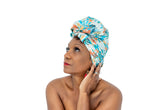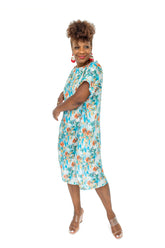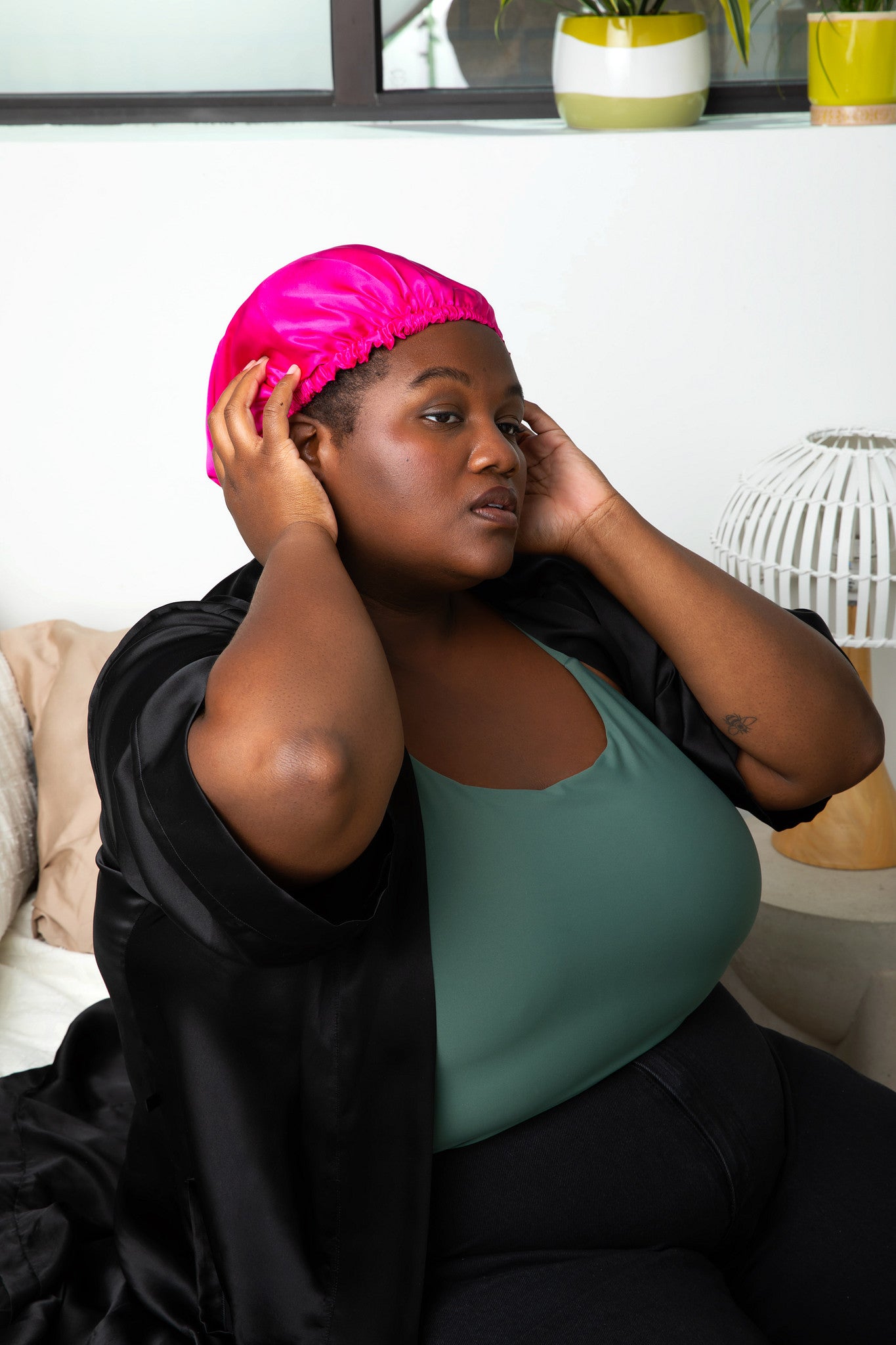The Truth about Black Business Month & 3 Things to Do About It
Founder's Corner: An Op Ed
We’re at an important precipice in American history where sibling rivals Capitalism and Equity are attempting to play nice in the sandbox…but why now? Once when opponents faced off in the boxing ring, Capitalism emerged as the reigning champ again and again. But I ask in a zero sum game with convenience as the referee, speed as the announcer, and low cost as the crowd -- did Equity ever really stand a chance? If you’re an eternal optimist like myself, you’ll always root for the underdog. Equity deserves its big break and for the first time in living memory, Capitalism’s winning strategy has grown strained, its blow weakened and its glory diluted. Equity, on the other hand (with a decimal of capitalism’s resources and infrastructure), has birthed creativity and innovation despite its losing track record.
We all know the saying, necessity is the mother of invention. Perhaps that’s what brought us to this point where siblings are willing to reconcile. In all their wisdom, Mother Invention and Father Disparity saw the trainwreck unfolding since infancy and allowed the tension to mature to its breaking point so the kids could confront the heart of the issue: Outdated Systems.

James Clear wrote that we don’t rise to the levels of our goals, we fall to the levels of our systems. Perhaps that’s why you’re wondering with all the public declarations of allyship and corporate investment in black and brown businesses, black female founders still receive less than 1% of venture capitalist funding. Even more disappointing, some of the same household name brands that were quick to pledge their support in closing the disparity gap in the wake of racial reckoning were just as quick to abandon Equity when the profits didn’t immediately arrive. But we can’t withdraw support for Equity so soon. Equity has the power to grow the middle class and expand access to healthcare, clean drinking water, safe neighborhoods and better education. One of Equity’s hidden talents is resilience compounded by its most powerful technique, entrepreneurship.
Which Startups Have Black Female Founders?
Like many founders, I started Ruby Sampson because I had an unmet need in the market. By no means was my entrepreneurial journey linear or intentional. My entrepreneurial story really starts on a cold and damp October morning in 2008. During study abroad I found myself roaming the markets of Tibet shell shocked over the incident that had just occurred. I had just stopped at an artisan’s table to admire a Buddhist statue when I felt jagged nails rip through my curls and claw at my scalp. My body recoiled, I yelled in pain and my right hand instinctively slapped the stranger’s hand out of my afro. I regained my composure as my horrified classmate leapt to my defense. Moments like these are the hidden hazards of study abroad, I reminded myself. But I still moved through the rest of my day stunned, unable to connect in conversation because of how I was commodified earlier.

When I decided to study abroad in China for a year, I knew I would need to find a hair solution for my chemically straightened 4C hair but never dreamed of how much my natural hair transition would drain my time and confidence. My hair not only became a focal point in daily interactions but an invitation into my personal space. Not to mention, the chronic dryness and breakage meant clumsily balancing my time between coursework and basic self care. My transition was supposed to be empowering but instead felt frustrating and I was flooded with insecurity. This moment was, unknowingly, the launch pad for Ruby Sampson.
In 2008, when I began to line my hair accessories and bedding with silk as a means to maintain moisture and manageability, I had no intention of starting a business. My hair health was booming like never before and I slowly gained confidence in my ability to find the best protective hairstyles that worked for me. When I moved home from China in August 2009, I was surprised when strangers would ask where they could buy my silk-lined head wraps. It was not until 2012 that I even entertained the idea of turning my DIY solution into a business. But it still took another 4 years before I considered myself a black female founder. When I received a job offer in Swaziland (now Eswatini) in 2014, I immediately jumped at the chance and decided to test my idea and booked my first table at a Saturday market in Johannesburg. Disappointingly, African prints and silk head wraps did not land in a market that preferred Western styles. After completing my contract and unsure that I had a market in Southern Africa, I returned home and continued to sew for myself.
Similar to my experience when I moved home from China, potential customers continued to ask where they could buy my outfits. But I noticed something new: the emergence of natural hair expos across the U.S. Again, I decided to apply for a 6 foot table at a local natural hair event and was astonished when I moved half my inventory in 4 hours. In 2016, I incorporated Ruby Sampson as a limited liability corporation in Washington, DC.
What Makes a Business Black-Owned and Why Care?
I’ve had the honor of meeting hundreds of black female founders over the years with a story similarly to my own. One unmet need after another led us down a path of entrepreneurship, whether intentionally or unintentionally. The path hasn’t always been linear or easy. In my case, several years passed before I really tested my concept and found a market.
While black entrepreneurship has been on the rise since 1999, COVID-19 accelerated everyone’s timeline and was a cleverly disguised invitation to review our life goals. Therefore, it’s no surprise that the global pandemic only created more entrepreneurs, despite the number of businesses that were forced to close doors. The US Census Bureau’s Annual Business Survey reports that:
“In 2020, Black people represented 14.2% of all Americans but only 2.4% of all employer-firm owners. Latino or Hispanic people represented 18.7% of the population and 6.5% of employer-firm owners, while Asian Americans represented 6% of the population and 10.6% of employer-firm owners. From 2019 to 2020, Black-owned businesses grew by 6,351 firms, or 4.72%—behind Latino or Hispanic (8.19%) and Asian American (5.33%) firms, but above white-owned businesses, which shrunk by 0.9%.
Black business growth was trending upward before the COVID-19 pandemic. From 2017 to 2020, the number of Black-owned businesses across the country increased by 13.64%—larger than all businesses in general, which increased by 0.53% over the same period. Black-owned firms brought in an estimated $141.1 billion in gross revenue in 2020—an 11% increase since 2017.”
The definition of a black-owned business refers to ownership and not workforce demographics. For a brand to qualify for certain certifications, grants and scholarship programs, the organization must have at least a 51% minority ownership stake.
But in the face of racial and socioeconomic strife, why should you care if a business is black-owned, much less minority-owned? Is it all just political? Not quite. If you take time to look at where and how businesses invest in their supply chains, manufacturing partners, employee communities and banking relationships, the redlining will jump off the page. In other words, you’ll see the unfair and unequal distribution of resources. More alarming, this bias seeps into our long term health outcomes and overall life expectancy. Black Americans have the worst health profile in the country. Healthy People 2020, a federal prevention agenda focused on building a healthier nation, identifies five markers that determine how our zip codes impact our health outcomes. Tulane’s School of Public Health and Tropical Medicine describes them as:
-
Neighborhood and built environment: The connection between where people live and their health. Key issues are nutrition, safe housing, interpersonal violence, and physical environmental conditions, such as exposure to pollution or noise.
-
Social and community context: The connection between people’s social support, including family circumstances and community engagement, and their health. Key issues are community participation, incarceration of a family member, and discrimination.
-
Economic stability: The connection between people’s financial circumstances, including income and cost of living, and their health. Key issues are poverty, employment, food security, and housing stability.
-
Education: The connection between people’s education and their health. Key issues are high school graduation, higher education, literacy, and access to early childhood education.
-
Health and health care: The connection between people’s access to health care and their health. Key issues are ease of access to health care (affordability, transportation, etc.) and health literacy.

Image Source: Public Health Maps
Disparities can sometimes look like a thinly disguised veil between the have and have nots. Recent studies only confirm that a zip code is the difference between a 100 year life and an illness-ridden, financially strapped experience. Does this mean that someone born 5 miles down the road is doomed to a life of darkness? Of course not. We can’t rule out free choice, mindset and an unrelenting work ethic. We also can’t dismiss that black businesses touch all five pillars and have the power to transform the safety, health and wellness of our communities. Ruby Sampson firmly sits on the third pillar by creating training and employment opportunities in partnership with the Carnegie School of Home Economics.
3 Impactful Ways to Support Black-Owned Businesses
Intentional investment by black and brown businesses, one of the five pillars outlined by the HP2020 framework, is the responsibility of the small business owners. Equally important is your guiding criteria when you decide which black-owned brands to support with each purchase. Does the brand impact your neighborhood, community, employment, education and/or healthcare?
Consider these three ways to support a black-owned brand in your orbit:
1. Amplify: The lightest lift is to amplify a black-owned brand by sharing with your friends, family, coworkers and any professional or social groups. But don’t limit yourself to one post! Research shows that it takes about 6 - 8 touch points to convert a sale. Do you need to post that many times? Definitely not, but consider spreading the word by:
- Reposting any content they share
- Recommending their products or services – word of mouth is one of the most effective marketing and allyship tools.
- Asking friends and family to follow a black brand’s social media account
- Recommending the brand for vending opportunities in your local area. You can either tag them in a post, recommend them to the organizer or connect them with the opportunity directly.
- Recommend the brand for relevant grant opportunities. Forward that email or tag them in that post to let them know!
- Donating to a cause that the black-owned brand sponsors
- Purchasing a product or service for yourself
- Buying gifts for your tribe
- Help connect black-owned brand to corporate opportunities
- Nominate a black-owned brand for a local/national award
- Connect a black-owned brand to vending or spotlight opportunity

It may be the end of Black Business Month but true allyship is year round. Your support doesn’t have to be limited to the months of February and August! And while the equity conversation is a growing inconvenience, we must shift our perception from a performative do-good deed to improving the quality of life, safety and stability of entire communities.
Drop us a line in the comments and share your thoughts! Are you a part of our social community? Follow us at @shoprubysampson on all channels. Subscribe to our mailing list to unlock secret sales, early access to product launches, natural hair and styling tips.
Views expressed are my own and not representative any other organization or entity.





